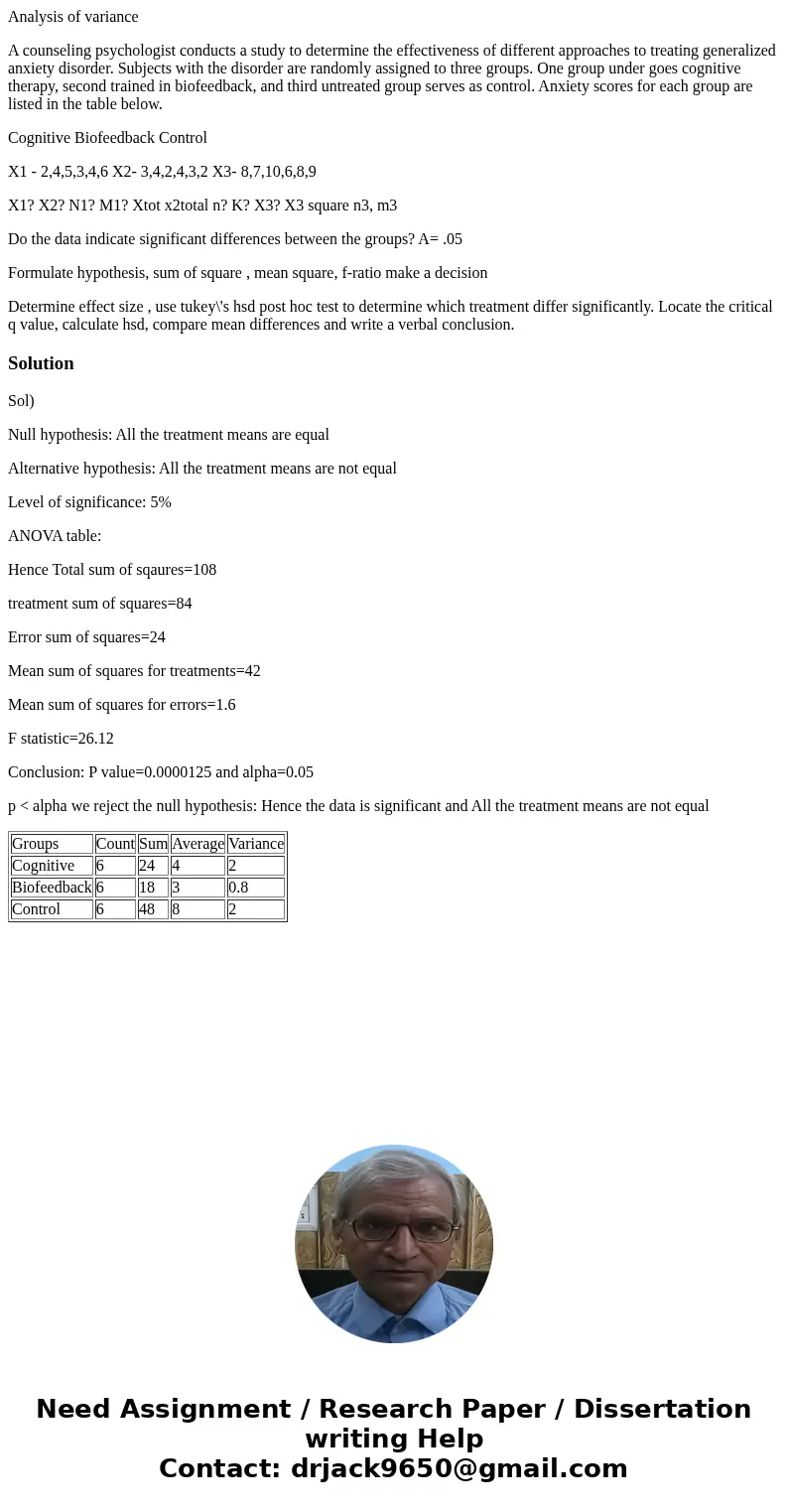Analysis of variance A counseling psychologist conducts a st
Analysis of variance
A counseling psychologist conducts a study to determine the effectiveness of different approaches to treating generalized anxiety disorder. Subjects with the disorder are randomly assigned to three groups. One group under goes cognitive therapy, second trained in biofeedback, and third untreated group serves as control. Anxiety scores for each group are listed in the table below.
Cognitive Biofeedback Control
X1 - 2,4,5,3,4,6 X2- 3,4,2,4,3,2 X3- 8,7,10,6,8,9
X1? X2? N1? M1? Xtot x2total n? K? X3? X3 square n3, m3
Do the data indicate significant differences between the groups? A= .05
Formulate hypothesis, sum of square , mean square, f-ratio make a decision
Determine effect size , use tukey\'s hsd post hoc test to determine which treatment differ significantly. Locate the critical q value, calculate hsd, compare mean differences and write a verbal conclusion.
Solution
Sol)
Null hypothesis: All the treatment means are equal
Alternative hypothesis: All the treatment means are not equal
Level of significance: 5%
ANOVA table:
Hence Total sum of sqaures=108
treatment sum of squares=84
Error sum of squares=24
Mean sum of squares for treatments=42
Mean sum of squares for errors=1.6
F statistic=26.12
Conclusion: P value=0.0000125 and alpha=0.05
p < alpha we reject the null hypothesis: Hence the data is significant and All the treatment means are not equal
| Groups | Count | Sum | Average | Variance |
| Cognitive | 6 | 24 | 4 | 2 |
| Biofeedback | 6 | 18 | 3 | 0.8 |
| Control | 6 | 48 | 8 | 2 |

 Homework Sourse
Homework Sourse